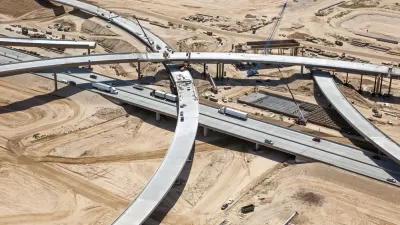A new report shows the need for Central Texas counties and cities to invest in their Latino populations.

Syeda Hasan reports: "Hispanic families in Central Texas don’t have the same opportunities to access health care, employment and early childhood education, according to a new report [pdf] from the Austin Community Foundation."
The report examined data on Latino residents from Travis, Williamson, Bastrop, Burnett, Caldwell and Hays counties. "They found the average per capita income in Central Texas is around $32,000, but for Latino residents, it’s about half that amount – just more than $17,000 a year," explains Hasan.
In addition to listing more of the report's findings, the article also surveys regional political leaders and advocates for insights about quality of life among Latino populations in Central Texas.
Notably, Hasan also describes the report as timed to coincide with the ongoing CodeNEXT process in Austin, which will rewrite the city's land development code. Austin City Councilmember Delia Garza is quoted in the article expressing her hope that discussions will move away from "protecting" neighborhoods. In Councilmember Garza's own words: "I think we should be protecting neighborhoods from fires and bears, maybe….But frankly, protecting neighborhoods has become a little bit offensive to me because what are we protecting them from? Families? Houses?"
FULL STORY: Report Finds Gaps In Economic Opportunities For Hispanic Families In Central Texas

Maui's Vacation Rental Debate Turns Ugly
Verbal attacks, misinformation campaigns and fistfights plague a high-stakes debate to convert thousands of vacation rentals into long-term housing.

Planetizen Federal Action Tracker
A weekly monitor of how Trump’s orders and actions are impacting planners and planning in America.

Chicago’s Ghost Rails
Just beneath the surface of the modern city lie the remnants of its expansive early 20th-century streetcar system.

Bend, Oregon Zoning Reforms Prioritize Small-Scale Housing
The city altered its zoning code to allow multi-family housing and eliminated parking mandates citywide.

Amtrak Cutting Jobs, Funding to High-Speed Rail
The agency plans to cut 10 percent of its workforce and has confirmed it will not fund new high-speed rail projects.

LA Denies Basic Services to Unhoused Residents
The city has repeatedly failed to respond to requests for trash pickup at encampment sites, and eliminated a program that provided mobile showers and toilets.
Urban Design for Planners 1: Software Tools
This six-course series explores essential urban design concepts using open source software and equips planners with the tools they need to participate fully in the urban design process.
Planning for Universal Design
Learn the tools for implementing Universal Design in planning regulations.
planning NEXT
Appalachian Highlands Housing Partners
Mpact (founded as Rail~Volution)
City of Camden Redevelopment Agency
City of Astoria
City of Portland
City of Laramie





























